Amazing Animals: Things you may not know exist.
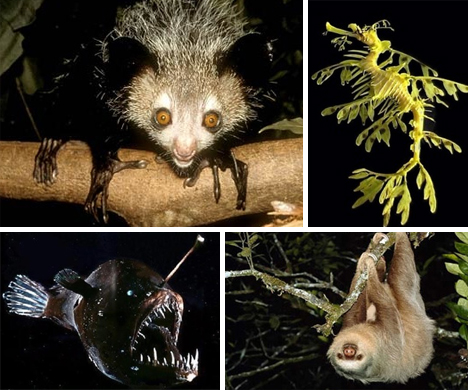
Our earth is amazing! Every day we go about our lives, and don’t realize how truly fragile and beautiful our lives are. We are so busy making deadlines, and punching the clock that we fail to see the most remarkable things.
This year alone, between 15,000 and 18,000 new species were found on our planet. According to the International Union for conservation, we also lost 795 species to extinction. Most of these animals we see in commercials as people fight a seemingly endless battle to preserve the beauty in our planet.
It is a daunting task that must be undertaken. Scientists and skeptics agree that the time is now to act. The animals I have highlight here may not be here tomorrow. There is a sad story repeating itself. Human inhabitation of the planet is causing great danger to the balance of life. The immediate threat is clear. Nothing will change if nothing is done. One clear way to make a difference is to start using less – of everything. Treat everything as if it is precious because it is.
The less we use, the less products companies create, and more of environment is left alone. Whenever possible, buy things with the least amount of packaging and buy things that are made at or near home, not imported. Animals highlighted here may never been seen by us in our lifetimes. Spread awareness of amazing animals, and habitats and people will start to notice their impact on the world.
Today, let us take a moment, slow down and see the amazing animals you may not know even existed. Conservation of our miraculous planet begins with the desire to see more of these beautiful creatures.
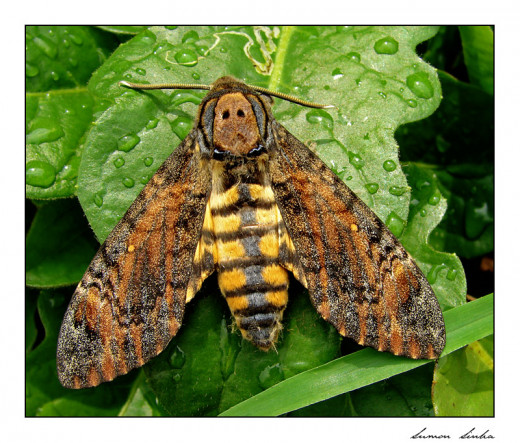
Death’s Head Hawk Moth
There are three species of this moth and they are all similar. It has a few names, Bee Robber and Bee Tiger Hawk. They combined the names to create the unique name. This moth, native to Europe and Asia, is probably the most famous of our amazing animals. Its unique design has been in show business thanks to the movie “Silence of the lambs” and Bram Stoker’s “Dracula”. Even without the notoriety, they are an interesting insect. The thorax has markings that are similar to a skull. Because of this marking they are common to folklore as being bad luck. The truth is that they are harmless. They have evolved coloration to mimic the common bee which they need to survive. They don’t even hurt the bees, they just imitate their smell and look so they can enter the hive unharmed, and eat their honey. Finally, they are one of the few moths that are able to make noises. They can squeak when irritated and the larvae make clicking noises with their jaws.
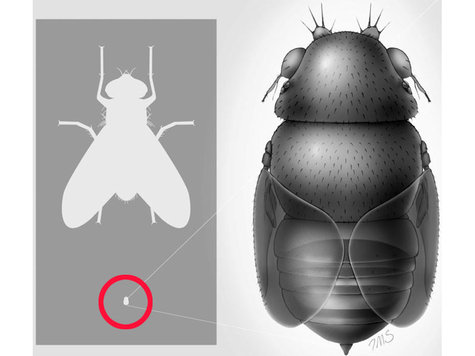
Euryplatea nanaknihali - World’s Smallest Fly
At less than a millimeter, (0.4 millimeters to be exact) this scuttle fly is the world’s smallest multi-celled animal. Euryplatea nanaknihali broke records and scientist’s minds as the astonishing fly proved to have all the organs and abilities as a fly double its size. It was discovered in Thailand only a little bit ago and finally given proper place in the science books in 2012. The worst part about this fly is that its life begins in the brain of a tiny ant. This microscopic fly lays its eggs inside the brain of an ant. It develops and eventually kills the ant. Some researchers have found ants still alive, missing heads, after being destroyed by the Euryplatea nanaknihali. Despite the parasitic nature of the beast, the name has innocent beginning. It is named after a boy from Thailand who has a fascination with insects and is a regular visitor of the insect conservatory near him.
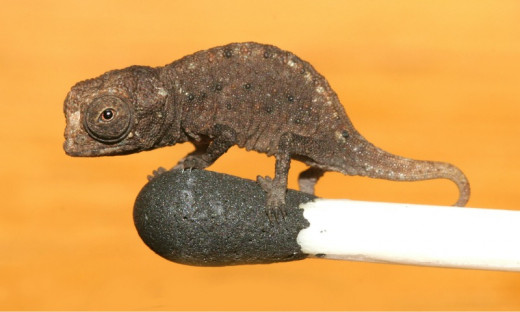
Brookesia micra – The hidden chameleon
The astounding length these fascinating animals reach is a maximum of 29 millimeters (or 1.1 inch)! No wonder these creatures have only recently been discovered. They have only been named a species for less than a year. In February 2012 they were put on the new species list. It takes up residence on a tiny island off of Antsiranana, Madagascar called Nosy Hara. Close relatives of this tiny creature have been studied from 2003 to 2007, but it was only recently recorded in the history books. They live in leaf litter during the day and climb trees at night. Not much is known about their daily habits. Scientists are still studying the tiny lizards. The trees they climb have been subject to illegal logging and this special animal is at risk of extinction already. The forests of Madagascar reap profit for loggers and this animal is a tiny victim. This is one animal that can truly benefit from people’s education. Support, sustainable logging, and get involved with helping to prevent illegal deforestation.
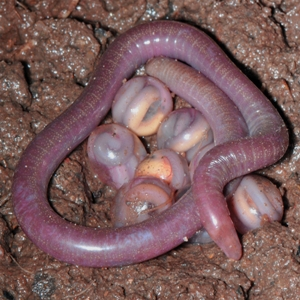
Caecilian – legless amphibians
Northeastern India has been hiding an amazing secret. The animal above is not a snake. It is not even a limbless lizard. It is called a caecilian, and there are at least seven varieties noted by scientists. It is a legless amphibian and it has been living deep within the soil. These interesting creatures look more like earth-worms rather than amphibians. They can grow up to a meter long. Unlike most amphibians they build nests underground and watch over their brood. This animal is a devoted mother as well. There are different species and some of the species will grow the eggs internally and give birth to live babies. Most of these animals still lay eggs. As always, a mother’s job never ends. After the young hatch from the eggs, the mother grows an extra slimy, thick, nutrient rich skin which it sheds to feed its babies until they can fend for themselves.
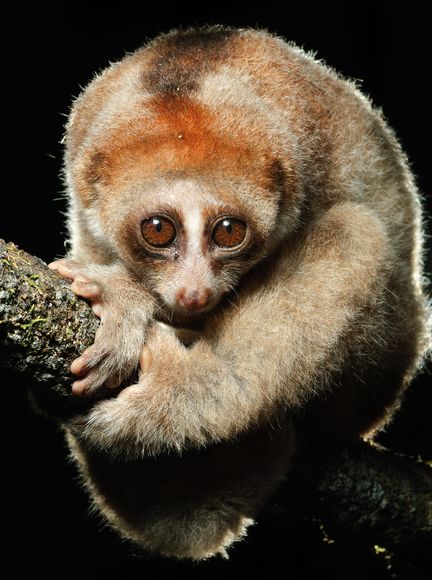
Nycticebus kayan – Slow Loris
This relatively new species is similar to the existing slow Loris species. It is a poisonous primate. It is a small nocturnal animal native to south and southeast Asia. Since they are harder to find to create a distinct DNA code, they are categorized by patterns on their faces, or their face “masks”. This particular species was incorrectly identified as a different species of Loris until 2012. The unique patterns on their faces go all the way down to their chins. Beware the Loris. If you see them “grooming” their armpits, they are most likely accessing their poison. They rub the poison from their armpits on their teeth and then bite. They have also been seen rubbing the poison on their babies as they go to get food. Little is known about their habits in the wild because they are only out at night and they move so slowly. They are, however, becoming a familiar name in homes. The illegal pet trade is taking the Loris’ in to be raised at homes near you. They are cute, but with so little known it is not a good idea to get one.
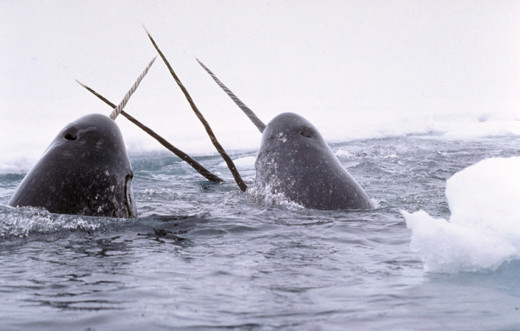
Narwhal – The Unicorn of the Ocean
The name actually means “corpse whale” in Old Norse, most likely due to the pale color of their skin. This astonishing social animal lives in larger groups in the Arctic Ocean year round. This makes the animal harder to study since human inhabitation of that area is nearly impossible. Scientists can say that they communicate vocally through squeaks, squeals, and whistles – similar to other whales. Because of their noticeable tooth, or tusk they are believed to have the magical powers of a unicorn and are hunted. The tusk is just a spiral tooth that grows through the upper lip of males. The tooth can reach lengths of 7 to 10 feet long. Females can grow tusks but the length is much less significant. Scientists have no idea why they have such a large tusk, but their theories include for mating rituals, and as a useful tool to get food, or even break the ice. They are whales but they are more closely related to porpoise, orca whales, and belugas.
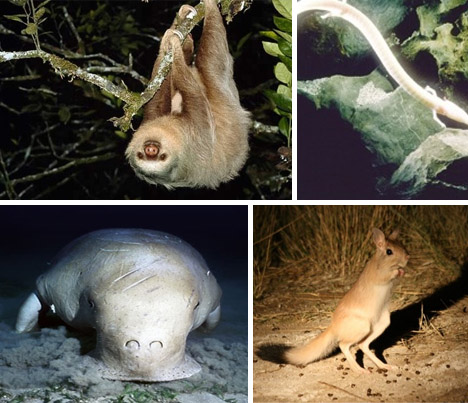
The miracle of life is one that will never cease to amaze!
Don’t forget to take some time today and witness the wonders of the world – if only for a moment.
The first step to making a better world is understanding it.









